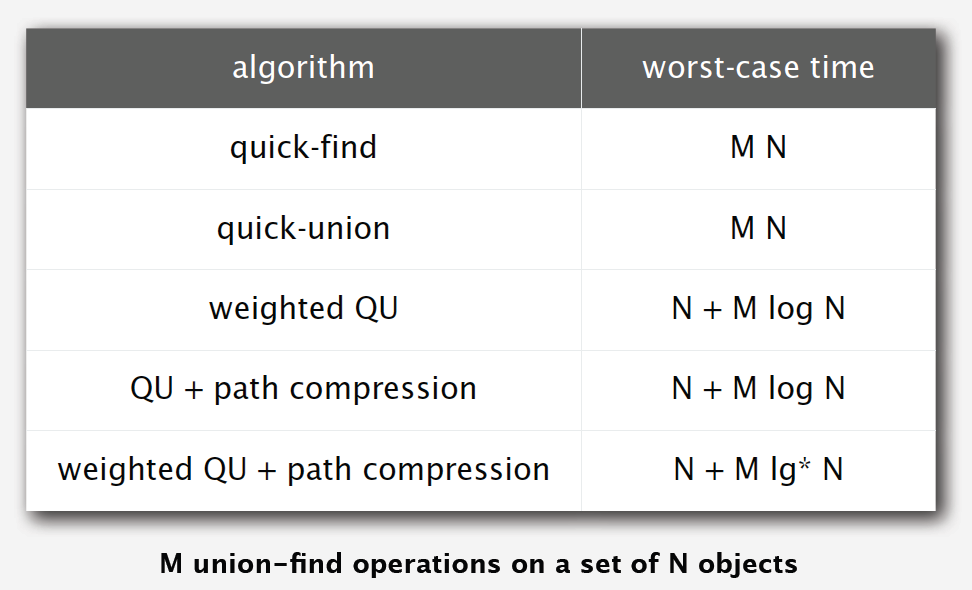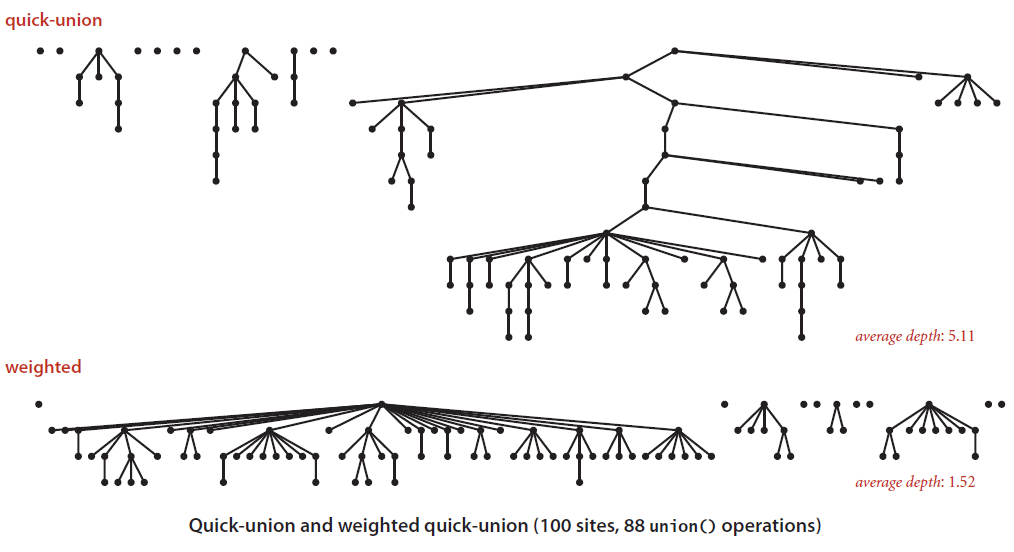Weighted Quick Union & Quick Find Algorithm in Ruby
Today we're going to explore a Ruby implementation of the Weighted Quick Union & Quick Find algorithm. This is an algorithm used to find if there is a connection between two nodes.
Imagine a complicated maze and ask the question of whether you can get from the start of the maze to the end. Is there a path through the maze? Another problem this algorithm can solve is whether 2 computers can communicate with each other. Is there a network connection that goes from Computer A to Computer B?

Components
This algorithm is made up of 3 methods. We'll explore each of the methods in detail and then look for ways to make our code faster. First things first: What are we actually trying to accomplish?
What we want to do is to find out whether 2 nodes share a common root node. If the nodes share a common root node we can say that they are connected. In other terms, there is a path from one node to another.
Data Structure
We will store this information in a tree which has its base data type as an Array. Each array element will store a link to its parent. If it is at the top of the tree it will store a reference to itself.
Initialization
To start things off we will need to tell our class how many nodes there are going to be and initialize them to point to themselves.
class UnionFindattr_accessor :nodesdef initialize(num)self.nodes = []num.times do |n|self.nodes[n] = nendendend
Root
Next we want to implement a method which will help us find the root of any specific node. We have defined the root as a node which references itself.
def root(i)while nodes[i] != i doi = nodes[i]endiend
Are two nodes connected?
This is actually the simplest method to implement. To find out if two nodes are connected we simply have to find their roots. If they share the same root, they are connected.
def connected?(i, j)root(i) == root(j)end
Union
To join two nodes together we have to make the root of one node equal to the root of the node we are trying to join. If they already share a common root we don't have to do anything... the work had already been done.
def union(i, j)rooti = root irootj = root jreturn if rooti == rootjnodes[rooti] = rootjend
Making things faster
We now have a working Quick Union Find class, but let's not stop there. There are 2 pretty easy changes we can make to make our algorithm more performant.
Flatten the trees!

The first thing we can do is to aim for flatter trees. If a tree grows too tall, it takes more work for our root method to traverse the tree to find the root. If we can keep things flatter there will be less steps to get to the top, and therefore will perform more quickly.
To do this we can keep track of the height of each tree, and choose to join the root of the smaller tree to the root of the larger tree. We will need to make 2 changes to our code for this to work:
Update our initialize method to have a sizes array.
class UnionFindattr_accessor :nodes, :sizesdef initialize(num)self.nodes = []self.sizes = []num.times do |n|self.nodes[n] = nself.sizes[n] = 1endendend
And secondly make changes in our union method to decide which root node gets joined to the other.
def union(i, j)rooti = root irootj = root j# already connectedreturn if rooti == rootj# root smaller to root of largerif sizes[i] < sizes[j]nodes[rooti] = rootjsizes[rootj] += sizes[rooti]elsenodes[rootj] = rootisizes[rooti] += sizes[rootj]endend
The trees must be flatter!
Lastly, we can get more performance out of our algorithm by compressing the paths as we traverse up them in our root method. What we are essentially doing is cutting the number of steps in half each time. We do this by making our current node have its parent root node.
def root(i)# Loop up the chain until reaching rootwhile nodes[i] != i do# path compression for future lookupsnodes[i] = nodes[nodes[i]]i = nodes[i]endiend
Final solution
Here is our final solution of the Weighted Quick Union Find algorithm with Path Compression:
class UnionFindattr_accessor :nodes, :sizesdef initialize(num)self.nodes = []self.sizes = []num.times do |n|self.nodes[n] = nself.sizes[n] = 1endenddef root(i)# Loop up the chain until reaching rootwhile nodes[i] != i do# path compression for future lookupsnodes[i] = nodes[nodes[i]]i = nodes[i]endienddef union(i, j)rooti = root irootj = root j# already connectedreturn if rooti == rootj# root smaller to root of largerif sizes[i] < sizes[j]nodes[rooti] = rootjsizes[rootj] += sizes[rooti]elsenodes[rootj] = rootisizes[rooti] += sizes[rootj]endenddef connected?(i, j)root(i) == root(j)endend
Here is an example when using the class:
u = UnionFind.new(10)p u.nodes# [0, 1, 2, 3, 4, 5, 6, 7, 8, 9]p u.connected?(1, 4)# falseu.union(1,2)u.union(2,3)u.union(3,4)p u.nodes# [0, 1, 1, 1, 1, 5, 6, 7, 8, 9]p u.connected?(1,4)# true